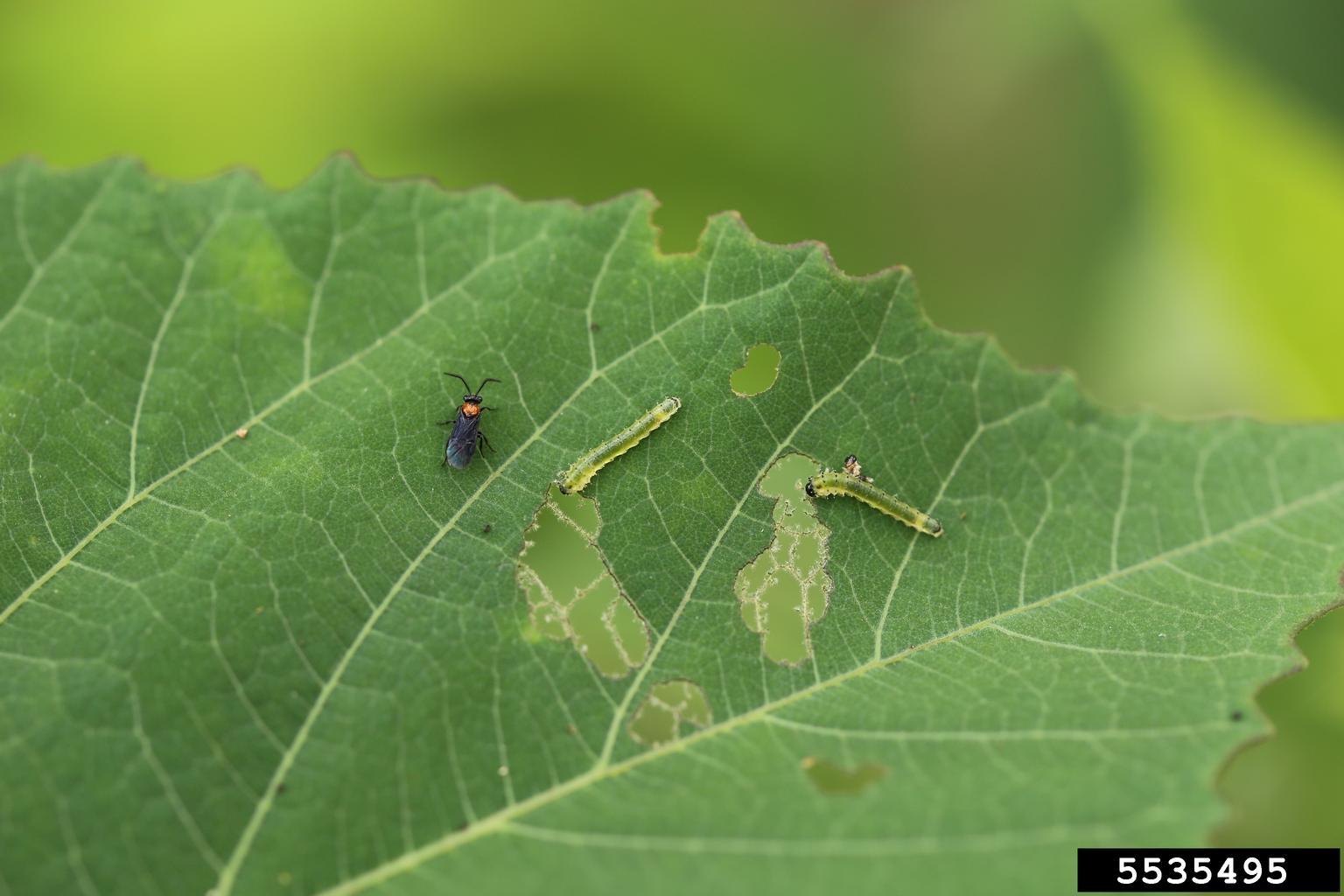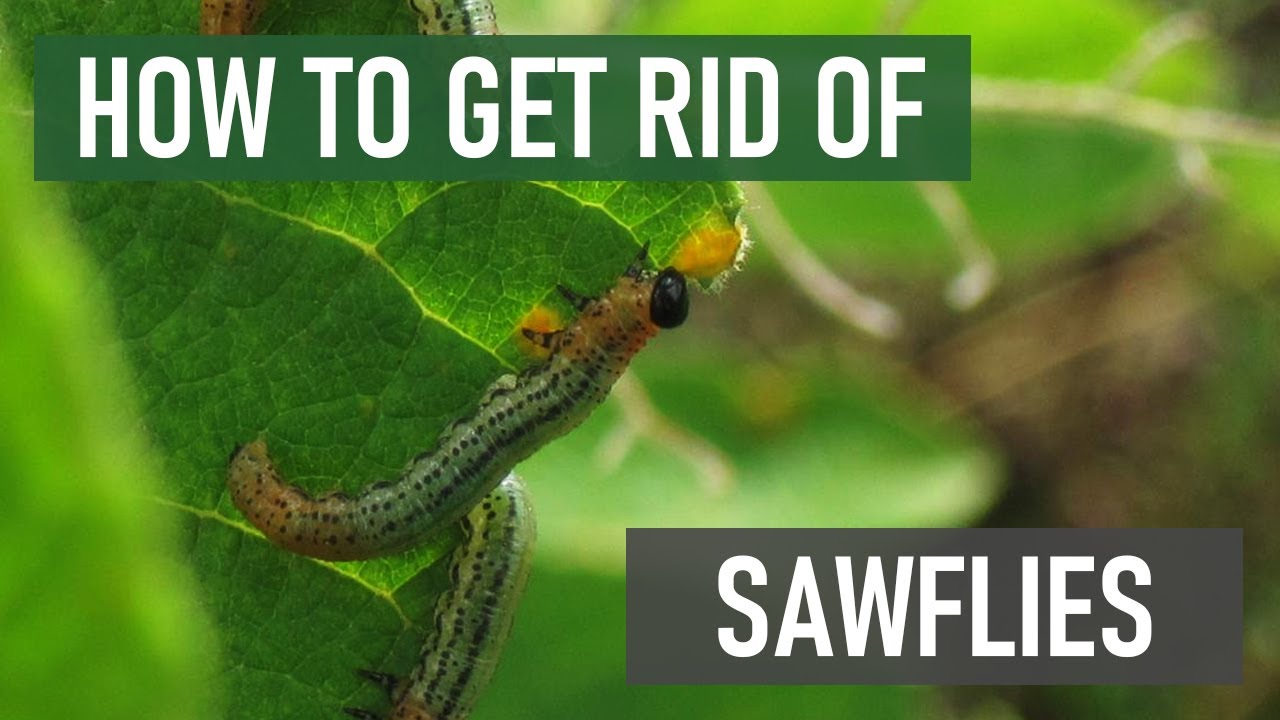To get rid of Hibiscus Sawfly, you can use natural remedies like neem oil or insecticidal soap. Hibiscus Sawfly is a common pest that can wreak havoc on your hibiscus plants, defoliating them and causing severe damage.
If left untreated, these pests can quickly multiply and infest your entire garden. However, there are effective ways to combat the Hibiscus Sawfly infestation and protect your plants. We will discuss the steps you can take to get rid of Hibiscus Sawfly and prevent future infestations.
Whether you opt for natural remedies or organic pesticides, it is crucial to address the issue promptly and ensure the health and vitality of your hibiscus plants. In the following sections, we will explore these methods in detail to help you effectively deal with the Hibiscus Sawfly problem.

Credit: extension.umd.edu
Recognizing The Signs Of Hibiscus Sawfly Infestation
Recognizing the signs of Hibiscus Sawfly infestation is crucial in effectively controlling and eliminating this pest. One of the key indicators of an infestation is the appearance of sawfly larvae on hibiscus plants. These larvae are small in size, typically green or yellowish in color, and have slim bodies with multiple legs.
The damage caused by Hibiscus Sawfly larvae can be extensive. They feed voraciously on the leaves of hibiscus plants, skeletonizing them by devouring the tissue between leaf veins. As a result, affected leaves become translucent and show a lacy or skeleton-like appearance. If left untreated, an infestation can lead to weakened and stunted plant growth.
Identification And Life Cycle Of The Hibiscus Sawfly
Hibiscus Sawfly larvae are easily identifiable due to their distinct appearance. These caterpillar-like creatures have smooth, green bodies with black heads and grow up to 1 inch in length. Their presence can be detected by the damage they cause to hibiscus plants.
The life cycle of the Hibiscus Sawfly consists of four stages: egg, larva, pupa, and adult. Adult sawflies lay their eggs on the underside of hibiscus leaves during the summer months. After about a week, the eggs hatch into larvae, which are voracious feeders. These larvae chew on hibiscus leaves, often causing complete defoliation of the plants.
As the larvae mature, they go through several molts before reaching the pupal stage. The pupae are dormant and do not feed. After a period of time, adult sawflies emerge from the pupae and the cycle begins again.
Understanding the life stages of the Hibiscus Sawfly is crucial in effectively managing and getting rid of these pests. By identifying the larvae and monitoring the life cycle, gardeners can take appropriate measures to control their population and protect their hibiscus plants.
How to Get Rid of Hibiscus Sawfly: Step by Step Guide
Prevention Strategies To Avoid Hibiscus Sawfly Infestation
Maintaining a healthy hibiscus plant environment is crucial to prevent Hibiscus Sawfly infestation. Start by implementing proper pruning techniques to remove any dead or damaged branches, as these can attract the pests. Regularly inspect your hibiscus plants for signs of infestation, such as chewed leaves or larvae presence. If you do find an infestation, dispose of the infested plant material correctly, ensuring that you remove and destroy any affected leaves or branches.
This will help to eliminate any potential hiding spots for the sawflies and prevent the infestation from spreading to other plants. Additionally, adopting cultural practices such as good watering techniques and fertilization can strengthen the plants and make them less susceptible to pests.
Natural Methods For Controlling Hibiscus Sawfly Infestation
The Hibiscus Sawfly is a common pest that can wreak havoc on your hibiscus plants. Fortunately, there are several natural methods you can use to control and prevent infestations. One effective approach is to introduce natural predators to your garden, such as lacewings and ladybugs. These beneficial insects feed on the larvae and adults of the sawfly, helping to keep their population in check.
Another option is to use organic pesticides and insecticidal soaps. These products are derived from natural ingredients and are less harmful to the environment compared to synthetic pesticides. They can be sprayed directly on the affected plants to kill the sawfly larvae without causing harm to beneficial insects or other animals.
In addition, companion planting can be a useful strategy. Certain plants, such as garlic, chives, and marigolds, have natural repellent properties that can help deter the Hibiscus Sawfly. By interplanting these repellent plants with your hibiscus, you can create a barrier that makes it less attractive for the sawfly to lay eggs.
Chemical Options For Hibiscus Sawfly Control
In order to effectively control Hibiscus Sawfly, it is important to select appropriate insecticides. These chemical options can help eliminate the pest without harming the hibiscus plant. When choosing insecticides, look for those specifically formulated for sawfly control. Some common insecticides that can be effective against Hibiscus Sawfly include:
| Insecticide | Active Ingredient | Mode of Action |
|---|---|---|
| Pyrethroids | Permethrin, Lambda-cyhalothrin | Disrupts the nervous system of insects |
| Bacillus thuringiensis (Bt) | Bacillus thuringiensis var. kurstaki | Produces toxins that target specific sawfly larvae |
| Spinosad | Spinosad | Causes paralysis and death in insects |
When using insecticides, it is important to follow the instructions for safe and effective use. Wear appropriate protective clothing, such as gloves and a mask, and apply the insecticide according to the recommended dosage. Avoid spraying in windy conditions to prevent drift. It is also advisable to apply insecticides in the early morning or late evening when bees and other pollinators are less active. By selecting the right insecticide and using it correctly, you can successfully control Hibiscus Sawfly and protect your hibiscus plants.
Removing And Destroying Hibiscus Sawfly Larvae
To get rid of Hibiscus Sawfly larvae, you can manually remove them from your plants. Check the undersides of the leaves and stems for any larvae and carefully pick them off. You can use gloves to protect your hands if you prefer. It is important to be thorough in this process to ensure that you remove as many larvae as possible.
After you have removed the larvae, it is crucial to properly dispose of the infested material. Do not compost or leave the infested material near your plants as the larvae can continue to develop and cause further damage. Bag the infested material tightly and dispose of it in your regular trash. This will help prevent the spread of the Hibiscus Sawfly and protect your plants from further infestations.
Monitoring And Long-term Management Of Hibiscus Sawfly
Regular inspection and monitoring of hibiscus plants is essential for long-term management and prevention of the Hibiscus Sawfly infestation. By conducting regular inspections, you can identify the presence of sawfly larvae early on and take necessary action. Inspect the leaves, stems, and flowers of your hibiscus plants for any signs of feeding damage or larvae. Keep an eye out for chewed leaves, holes, or even the sawfly larvae themselves.
Incorporate preventive measures into your routine care to minimize the chances of Hibiscus Sawfly infestations. Start by practicing good garden hygiene, such as removing fallen leaves and pruning dead or damaged branches. This will help in reducing potential breeding grounds for sawflies. Additionally, consider using organic mulch around your hibiscus plants, as this can act as a barrier against sawfly larvae.
| Preventive Measures | Description |
|---|---|
| Beneficial insects | Encourage the presence of natural predators like ladybugs, lacewings, and parasitic wasps, which feed on sawfly larvae. |
| Hose down the plants | Spray water forcefully on the plants in the early morning to dislodge and remove the sawfly larvae. |
| Organic insecticides | Consider using organic insecticides like neem oil or insecticidal soap, carefully following the instructions for application. |
Regular inspection and the incorporation of preventive measures into your routine care can help keep your hibiscus plants free from Hibiscus Sawfly infestations over the long term.
Frequently Asked Questions Of How To Get Rid Of Hibiscus Sawfly
How Do You Get Rid Of A Sawfly Infestation?
To get rid of a sawfly infestation, follow these steps: 1. Identify the infested plants and remove them to prevent further damage. 2. Prune affected parts of the plants and dispose of them. 3. Apply a recommended insecticide to the remaining plants, focusing on the affected areas.
4. Keep the garden clean and free from debris to discourage sawflies. 5. Monitor the plants regularly to catch any new infestations early.
What Kills Sawfly Caterpillars?
The predators like birds, wasps, and beetles are natural enemies of sawfly caterpillars and can kill them. Insecticides specifically designed for sawflies can also be effective in controlling their population.
What Is A Home Remedy For Sawflies?
To control sawflies at home, mix equal parts of dish soap and water. Spray the mixture directly on the sawflies to suffocate and kill them.
Do Sawflies Eat Hibiscus Leaves?
Yes, sawflies eat hibiscus leaves, which can result in defoliation and damage to the plants.
Conclusion
Getting rid of hibiscus sawfly can be achieved through a combination of preventive measures and targeted treatments. Regularly inspecting and removing affected leaves, promoting a healthy growing environment, and using organic insecticides can help control the infestation effectively. Remember to follow these steps consistently to ensure the lasting health and beauty of your hibiscus plants.
With proper care and attention, you can keep these pesky pests at bay and enjoy a vibrant garden.

